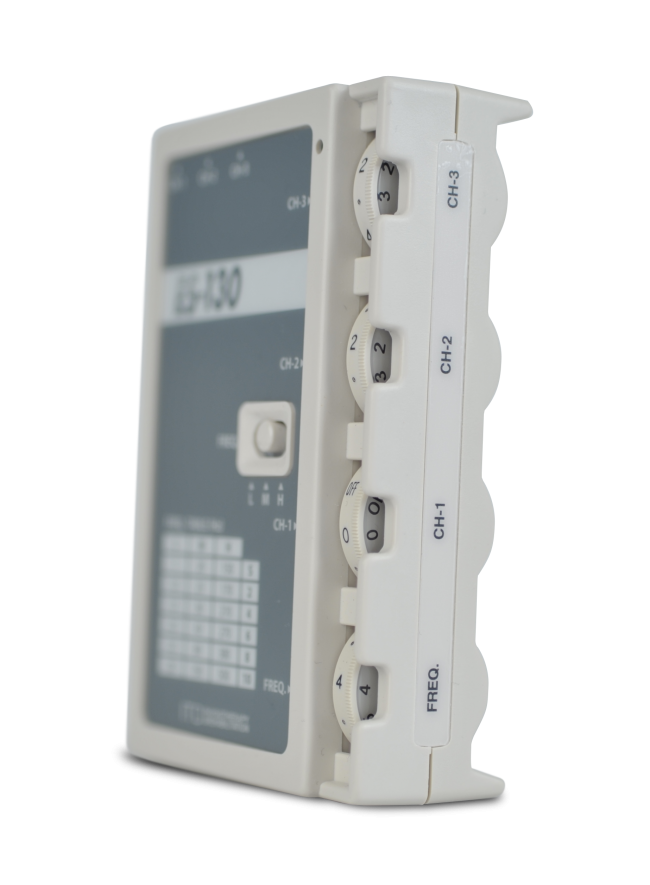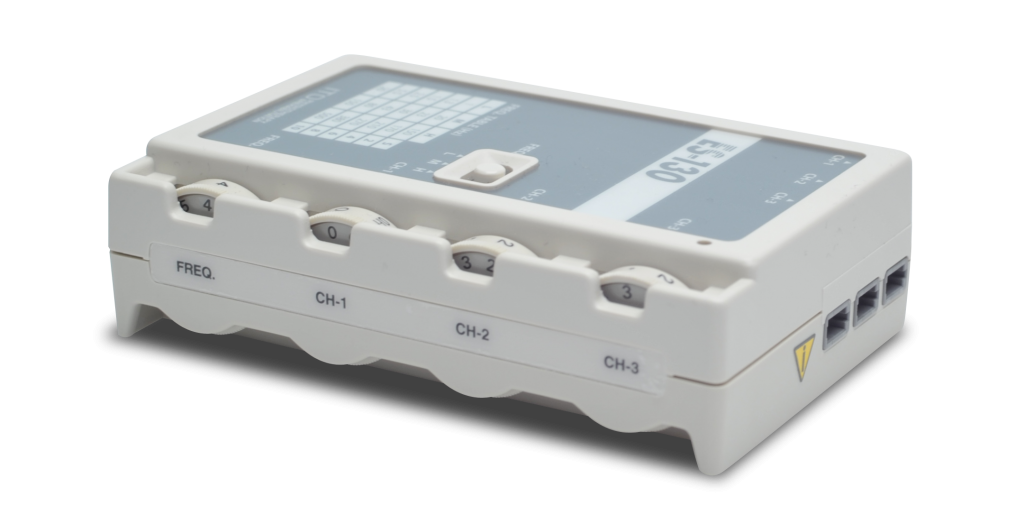Elegant Simplicity
With it’s simple user-interface the ES-130 will make electro-stim a fast and effective treatment for your patients.
Dependable
As a pioneer in this field, Ito continuously develops innovative, high quality equipment that is used in medical facilities around the world.
Safety
Ito’s quality environmental management system is certified to meet ISO 9001, ISO 13485, and ISO 14001, and all products comply with MDD (EU), UL and FDA (U.S.A).

| Specifications | 500 ohm test load |
| Output Channels: | 3 independent intensity channels |
| Frequency: | |
| (adjusted with fine frequency dial) | L– 1 to 20 Hz M– 20 to 150 Hz H– 150 to 500 Hz |
| Low volts and current: | 0 to 10 volts, 0 to 20 milliamps |
| High volts and current: | 0 to 20 volts, 0 to 40 milliamps |
| Voltage, Max: | 30 volts |
| Pulse width: | 100 microseconds (µS) |
| Pulse shape: | asymmetric biphasic square wave |
| Pulse modes: | continuous |
| Power indication: | flashing LED, each channel |
| Power source: | 9 volt battery |
| Frequency indicator: | flashing red light |
| Size, weight, color: | 4.5″ x 3.2″ x 1.2″, 0.3 lbs, Gray |
Questions?




Trusted worldwide by companies, schools, and practitioners just like you
It’s robust and durable; several in my office are 25 years old.
Joseph M. Helms, M.D.“…three major wave-lengths to reduce pain and muscle spasm…light weight, simple to use and comfortable for the patient.”
Matt Callison“…easy to operate and an excellent first device for the practitioner just getting into E-stim, as well as the experienced practitioner looking for a portable device…”
Steve Collins, L.Ac


